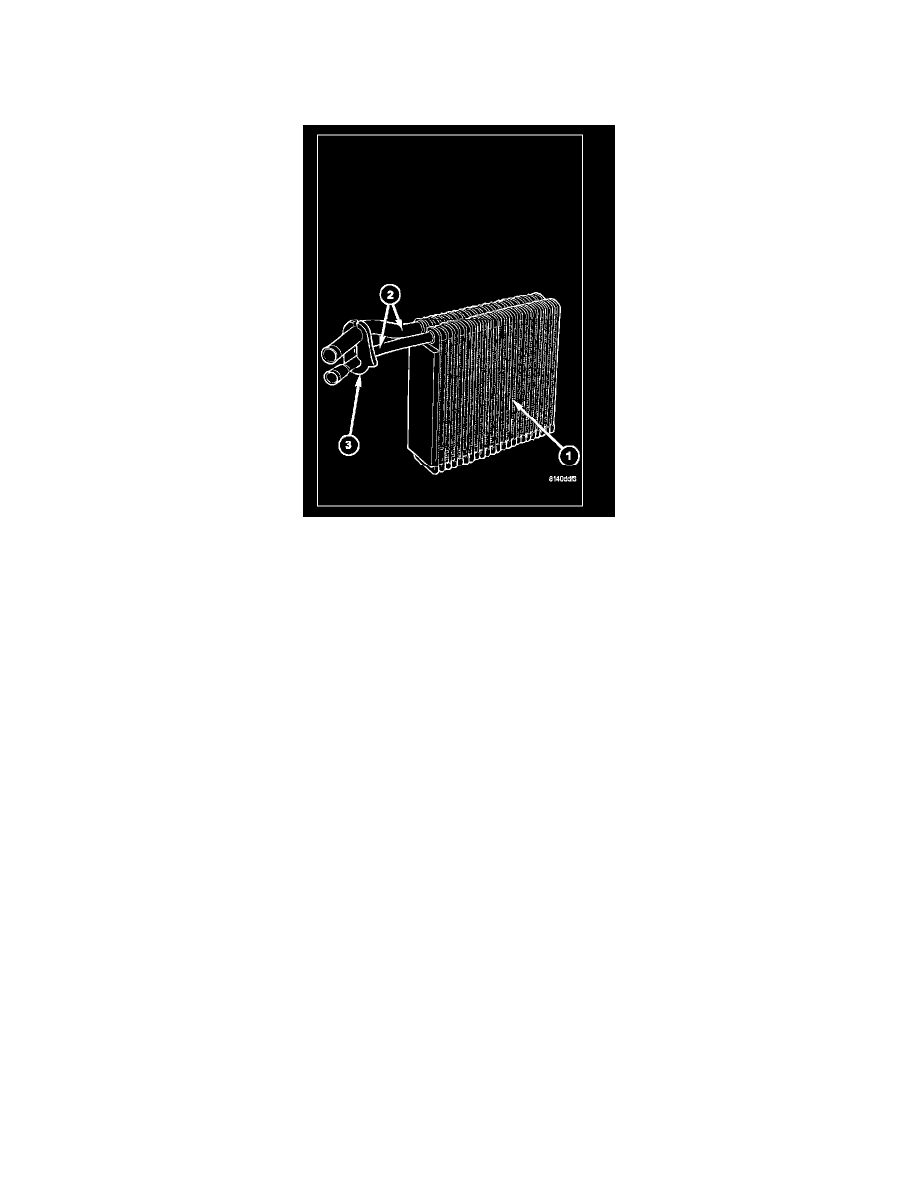Raider 4WD V6-3.7L SOHC (2007)

Evaporator Core: Description and Operation
EVAPORATOR - A/C
DESCRIPTION
The A/C evaporator (1) for the heating-A/C system is located within the HVAC housing, behind the instrument panel. The A/C evaporator is positioned
in the HVAC housing so that all air entering the housing must pass over the evaporator fins before it is distributed through the heating-A/C system ducts
and outlets. However, air passing over the evaporator fins will only be conditioned when the A/C compressor is engaged and circulating refrigerant
through the A/C evaporator. The evaporator tubes (2) are attached to the side of the A/C evaporator and are secured to the HVAC housing by a
removable flange (3). The A/C evaporator can be serviced by removing and disassembling the HVAC housing assembly.
OPERATION
Refrigerant enters the A/C evaporator through the A/ C orifice tube as a low-temperature, low-pressure mixture of liquid and gas. As air flows over the
fins of the A/C evaporator, the humidity in the air condenses on the fins, and the heat from the air is absorbed by the refrigerant. Heat absorption causes
the refrigerant to boil and vaporize. The refrigerant becomes a low-pressure gas when it leaves the A/C evaporator.
NOTE: Replacement of the refrigerant line O-ring seals and gaskets is required anytime a refrigerant line is opened. Failure to replace the rubber O-ring
seals and metal gaskets could result in a refrigerant system leak.
The A/C evaporator has no serviceable parts except for the O-ring seals. The O-ring seals used on the connections are made from a special type of rubber
not affected by R-134a refrigerant. The O-ring seals must be replaced whenever a refrigerant line is removed from the A/C evaporator.
The A/C evaporator cannot be repaired and must be replaced if found to be leaking or damaged.
